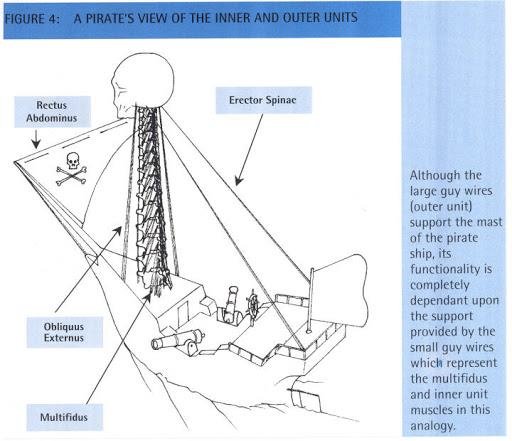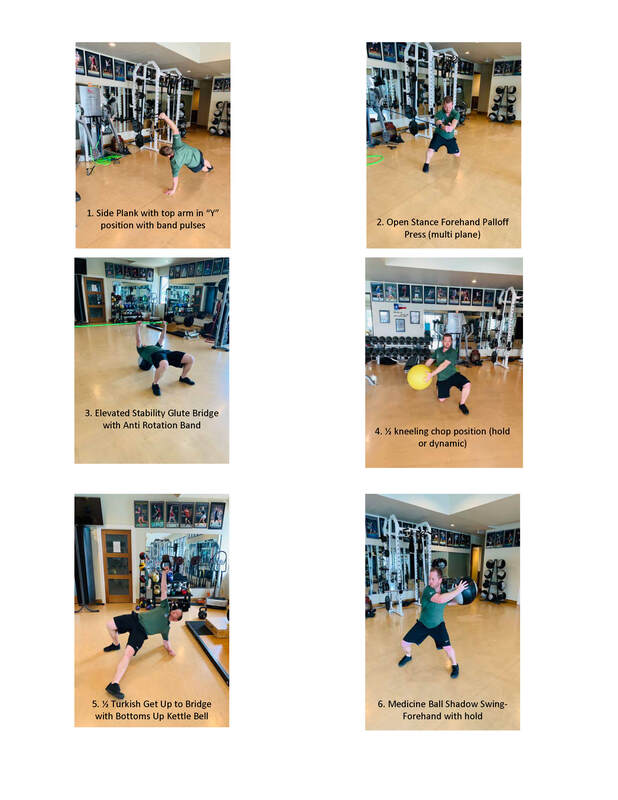Co -worker coach Fitness and Academy, Austin Tennis Academy
Medicine hours, long board holds, crushes and sitting. Is this type of basic training for a tennis athlete wrong? These types of basic methods of training exist for ages, but that does it mean that these methods are optimized? I would guess not. While most videos and basic routines published for tennis athletes are either extremely dynamic (throws ball medicine) or extremely static (record plans), which lacks a huge message to optimize the performance of a tennis athlete, not to mention protecting their body from injury.
All the following components of basic training must be included for the tennis athlete:
- Anti-revolution: Movements that resist rotation in the spine (all strokes in tennis)
- Anti-Extension: Movements that resist extension in the spine (serve focus, position position)
- Anti-Lateral Flexia: Movements that resist side bend or side bending (all strokes in tennis)
- Static core stability: resistance of movement or creating “stiffness”. in the trunk. Assumption before powerful and dynamic nuclear movements
- Dynamic core stability: Maintaining postural control and stability at load/tension or movement In several planes of movement. (All situations in tennis)
- The disorder: External disorders or stimulus (eg ball contact). Burns the nucleus’s reflective stabilization
As you can see, the plank holds or ball drills are just starting to scratch the surface of the basic training needed to optimize the body of the tennis athlete.
I am sure that most of us know the kinetic chain and the transfer of strength or energy for a tennis athlete. This concept must be addressed in the main training or you risk energy leaks, inefficiency of movement/moves and injuries. The tennis athlete is extremely dynamic, competing in several levels of movement, in a chaotic and uncontrolled environment. Basic training must imitate these requirements.
The tennis athlete must have a strong and stable foundation in which he can repeatedly and control the power. It comes from a concept created by renowned biomechanics Janice Moreside and Stuart McGill. This concept is “proximal stability for distal mobility”. Proximal importance is located near the center of the body (ie the core) and distal significance, which is located further from the center of the body (ie the hand/foot). Functional basic training for a tennis athlete must deal with this concept to fill in the lack of interconnections of the partial range of movement exercises and prematurely performed sexy and dynamic performance exercises. Simply put, a tennis athlete must train with a controlled platform (proximal) for mobile but controlled and dynamic (distal) environment.
“In an effective condition, the strain provides adequate proximal stability or controlled mobility to support an optimal task or postural performance.” Basmajian, SE (1993). Rational manual therapy. R. Nybberg (ed.). Williams and Wilkins.
Cooperation with tennis athletes in this functional way helps us to combine a kinetic chain while improving the stability of the court.
This is one of my favorite pictures that show the importance of this: taken from Paul Cheka’s scientific nuclear conditioning:
I call on everyone to make creative to become their basic training to help tennis athletes be issued to the specific requirements they will see in court.
Here are only 6 of many of my favorite functional nuclear exercises you can play with (at the end of this article):
- Side plate with upper arm in the “y” position, performing small pulses or movements with a belt
- Isometric ownership specific for attitude with multiplar movements Paloff Ald
- Variations of glute bridge with disorders (external disruption or stimulus) from external force or band
- ½ kneeling or attitude of specific movements of a Swiss ball/gaps with your hands (they can add failures to the ball)
- ½ Turkish getting up to a bridge with a tribute (can add failures to the upper arm or lower kettle to the top kettle)
- Medicine Ball Shadow Shots with End Positions (they may add failures to detention)
Finally, you must be able to resist movement and stabilization to repeatedly produce it with performance, efficiency and safety. According to the concept of “proximal stability for distal mobility”, this missing combination of basic training for a tennis athlete can fill in. In a functional environment, the role of cores is not only to produce movement, but to stabilize and resist movement. Functionally, the basic musculature will be a common contract to help create stiffness and stability to protect the body’s joints by combining kinetic chain and transmission forces/energy (see types of basic workouts listed above). They have direct “why” in their main training.
So I will ask again … Is the current basic training for a tennis athlete? You make decisions.
If you need further information or any questions to optimize basic tennis training, you can reach Josh at:
E -mail: (Protected E -Mail)
Cell: 2603855913
Insta: @coach_rif
Do not miss basic training exercises below!















